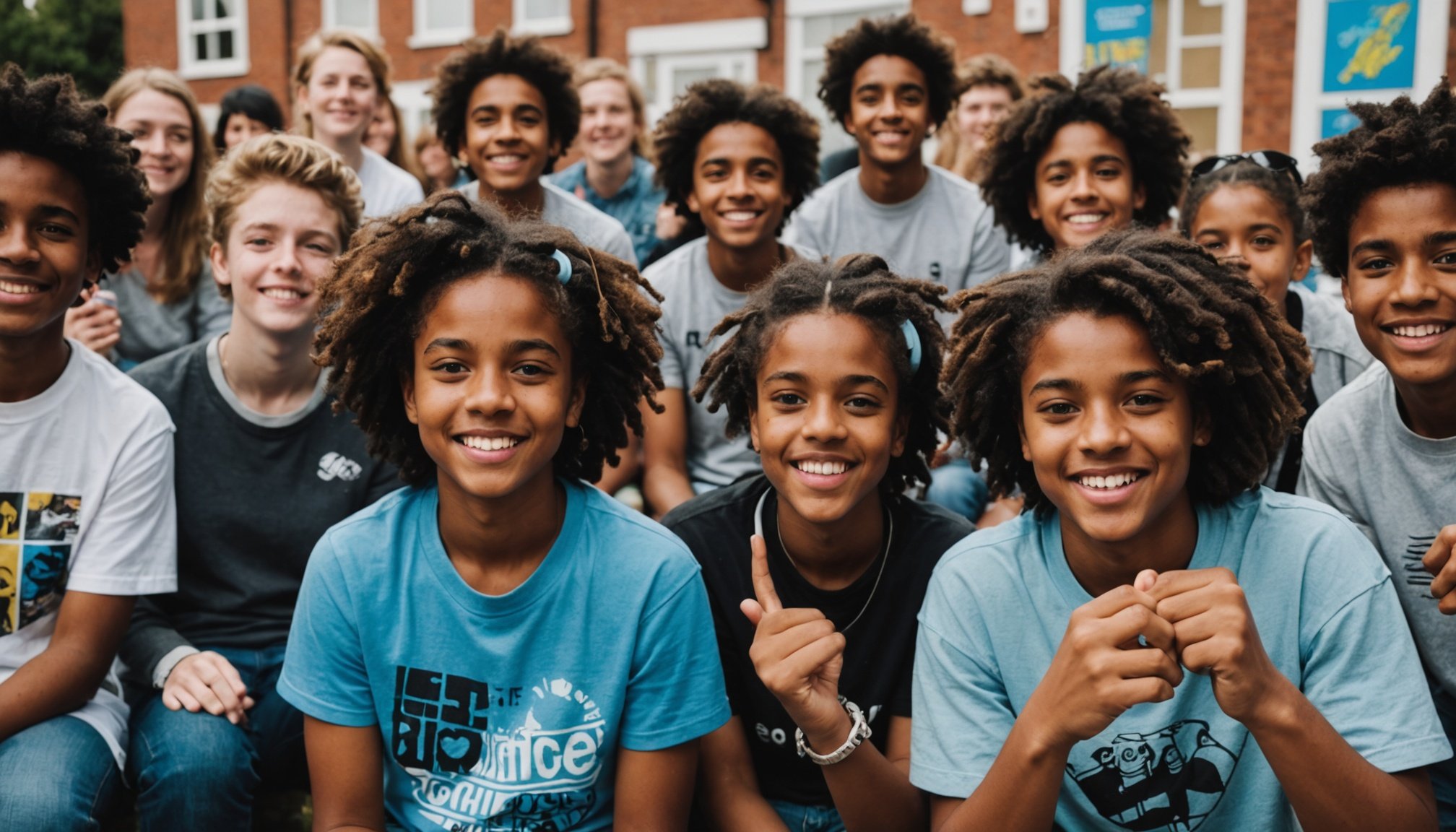Overview of Youth Resilience Initiatives in the UK
The importance of resilience in youth development cannot be overstated. It is a critical component that equips young individuals with the ability to overcome challenges and adapt to unpredictable environments. Across the UK, a range of initiatives are underway, aimed at bolstering this crucial trait amongst young people. Various community initiatives play a pivotal role in this endeavour, as community engagement provides both the support network and resources necessary for fostering resilience.
Several UK programs have been established to nurture youth resilience, each with unique approaches tailored to the needs of their specific communities. From mentorship programs to creative arts and sports initiatives, these programs are designed to equip young individuals with essential life skills and resilience-building opportunities.
This might interest you : Fostering innovation: how uk universities can ignite a creative culture
The role of the community cannot be underestimated in the success of these initiatives. Communities act as a bedrock, providing both morale and logistical support. Through UK programs that prioritize youth resilience, young people gain access to safe spaces where they can learn, grow, and thrive. Community-driven efforts are often instrumental in creating environments where resilience can be cultivated, emphasizing collective action and shared responsibility in youth development.
Case Studies of Successful Programs
Investigating successful programs is essential to understanding how to cultivate youth resilience. Case studies reveal how varied societal elements contribute to program success through community engagement.
This might interest you : Fostering innovation: essential tactics for nurturing a vibrant culture in uk healthcare organizations
Example 1: Creative Arts Programs
Many organizations are utilizing creative arts programs to bolster youth resilience. These programs aim to enhance self-expression and confidence among young people. Participants often report a sense of accomplishment and empowerment. Organizers have noted a positive shift in community cohesion, indicating that creative arts foster connections and reinforce emotional well-being.
Example 2: Sports and Recreation Initiatives
Sports and recreation initiatives serve as a significant conduit for building resilience. Typically designed to promote teamwork and discipline, these initiatives often yield improved psychological and physical well-being for participants. Participation rates are impressive, with many young individuals showing enhanced social skills and higher self-esteem. Coordinators and coaches underscore the transformative power of sports in youth development.
Example 3: Mentorship and Support Networks
Mentorship and support networks are pivotal in nurturing resilience. These programs match youth with mentors, fostering supportive relationships and personal growth. Success stories abound, illustrating the positive impact of consistent guidance. Resources such as training and developmental workshops are vital, with partnerships between schools and local businesses further enhancing program scope and effectiveness.
Community Partnerships and Funding Opportunities
Fostering youth resilience through community partnerships and funding is a collaborative effort involving multiple stakeholders. Local councils, educational institutions, and private organizations are critical players in providing both financial and logistical support. Effective collaboration strategies often involve aligning objectives with community needs, maximizing resource utilization, and creating sustainable engagement channels.
Key stakeholders typically include government agencies, nonprofits, and local businesses, each playing a part in designing and funding these initiatives. One successful strategy is forming alliances with educational bodies to integrate resilience-building programs into school curricula, ensuring continuity and relevance.
Funding opportunities vary, with sources ranging from government grants to corporate sponsorships. Establishing clear objectives and demonstrating community benefit can significantly enhance funding prospects. For example, data from past successful programs can be pivotal in securing investment.
Examples of Successful Collaborations
- Local Councils: Implement initiatives through public funding and policymaking.
- Private Sector: Provide financial backing and mentorship opportunities.
- Nonprofits: Serve as intermediaries, leveraging networks to facilitate program delivery.
These partnerships are essential for replicating successful models and broadening the impact of youth resilience programs. They ensure that resources are efficiently marshaled, facilitating widespread benefits within communities.
Expert Insights on Youth Development
Exploring expert opinions offers valuable perspectives on enhancing youth development. Youth development insights highlight that community engagement is crucial in nurturing resilience among young people. Experts emphasise the need for integrated approaches that consider both emotional and practical aspects of development.
Voices from Youth Workers
Youth workers provide frontline perspectives on the challenges experienced in fostering youth development. They often confront issues such as limited resources and varying levels of community support. However, they also share effective strategies. One popular method is building strong relationships with participants, which can significantly boost engagement and resilience.
Research Findings on Resilience
Studies consistently demonstrate that community involvement plays a pivotal role in youth resilience programs. Results show that when youth feel connected to their communities, there is a marked increase in adaptability and perseverance. Statistics indicate that such programs reduce risks associated with mental health issues and improve overall well-being.
Future Trends in Youth Engagement
Emerging trends suggest a shift towards more personalised and culturally responsive community initiatives. Future community engagement strategies are expected to focus on harnessing technology to connect and support youth, offering new avenues for accessibility and interaction. This progression could revolutionise how UK programs operate and expand their reach.
Strategies for Fostering Creativity in Youth
In nurturing youth resilience, creativity development emerges as a crucial element. Creative skills not only boost problem-solving abilities but also enhance adaptability—key components of resilience. Effective youth engagement strategies involve encouraging creativity through diverse means. Whether in classrooms or community settings, fostering a creative mindset enables young people to tackle challenges innovatively.
One effective educational approach emphasises experiential learning. By engaging youth in hands-on projects, they are encouraged to experiment, think independently, and learn by doing. This method promotes critical thinking and innovation, reinforcing resilience.
Innovative methods for fostering creativity also include integrating arts and technology. Programmes that incorporate digital tools alongside traditional creative outlets allow youth to experience a blend of artistic and technological exploration. Such integration can make creative pursuits more engaging and relevant in today’s digital age.
Additionally, collaborative projects that require teamwork can stimulate creativity among peers, fostering a sense of collective resilience. Encouraging youth to work together not only builds social skills but strengthens their ability to adapt to varied perspectives—an essential component in resilient individuals.
Through diverse educational approaches, creativity becomes a catalyst for resilience, equipping youth with essential skills to navigate an ever-changing world.

